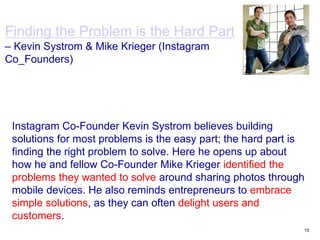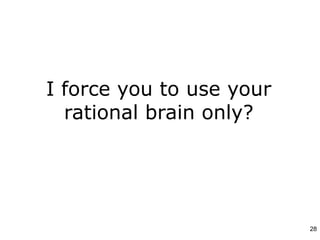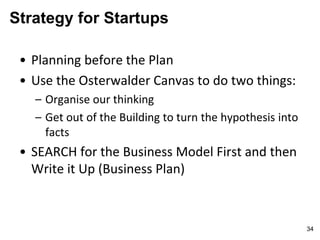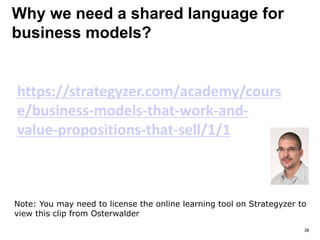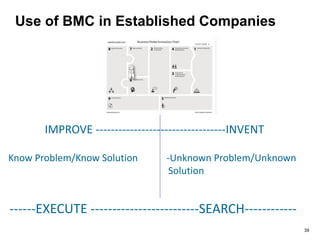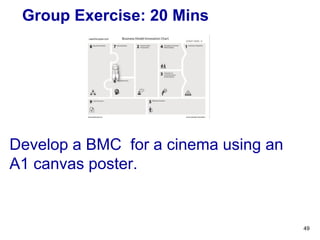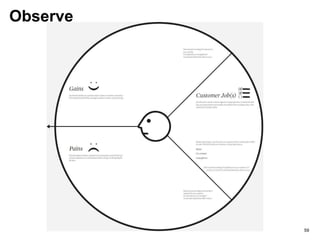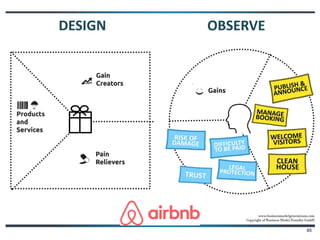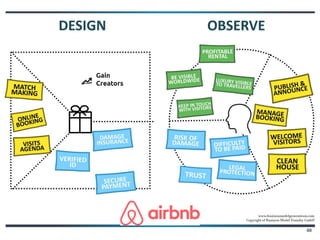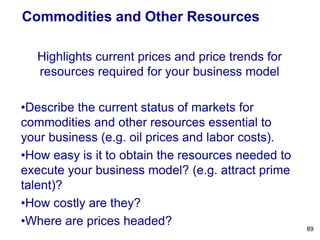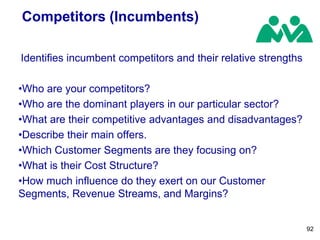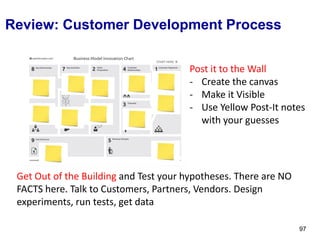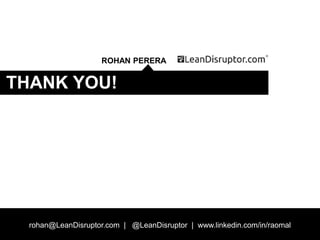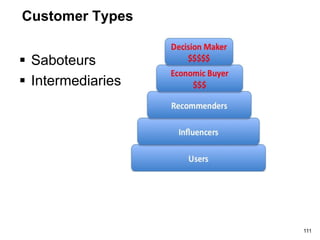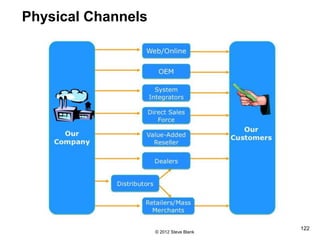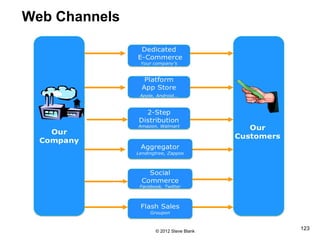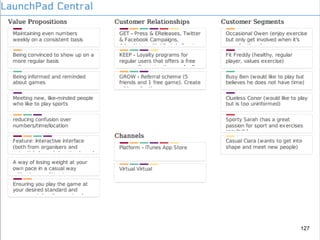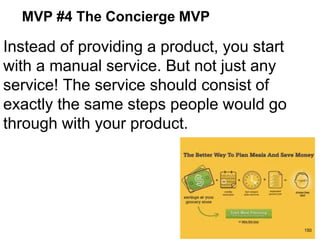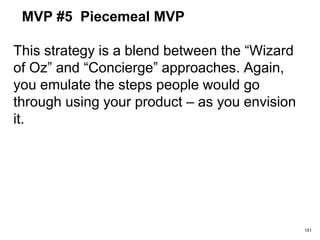How to build a startup new frontiers 2017
- 1. Strategy and Business Models – DIT PM Module 1 ROHAN PERERA RAOMAL PERERA rohan@LeanDisruptor.com | @LeanDisruptor | www.facebook.com/LeanDisruptor HOW TO BUILD A STARTUP Using Business Model Innovation
- 2. ROHAN PERERA Entrepreneur Cheqio and LyfeStyle Facilitator of Entrepreneurial Studies Godolphin Flying Start Programme, UCD Innovation Academy, DIT New Frontiers Programme, DIT iCubed Programme, SEI Impact Programme StartUp Consultant Pundit Arena, UniTuition Semi-Professional Poker Player Plays Locally/Internationally and Online Brand Ambassador Cheqio (http://www.cheqio.com/othersports) Contact Rohan@leandisruptor.com www.linkedin.com/in/rohan-perera 2
- 3. RAOMAL PERERA Serial Entrepreneur ISOCOR (NASDAQ: icor) & Network365/Valista (Intel) Adjunct Professor of Entrepreneurial Studies INSEAD & UCD Business Model Innovation, Lean Startup, Leadership & Fund Raising Consultant Clients include: MSD (Merck), HP (Hewlett Packard), IFB (Irish Film Board), HSE (Health Service Executive), Arvato (Bertelsman), Resmed, Openet, Glandore, SEI (Social Entrepreneurs Ireland), DJEI (Dept of Jobs, Entreprise and Innovation), CWIA (Cartier Women’s Initiative Awards) … Accolades Finalist Ernst & Young Entrepreneur of the Year Tech Pioneer World Economic Forum ISA Award for Outstanding Software Achievement 3
- 5. Learning Outcomes 5 • Identify the Problem/Need first before defining the Solution. • To introduce you to the key tools and techniques to help you build a successful startup or at least reduce the risk of failure • Learn to invent design and build powerful new business models using a set of business model innovation tools. • Understand the environment in which you operate
- 6. Your SOLUTION is NOT my PROBLEM 6 Take 2 minutes to write down the PROBLEM/NEED you are addressing
- 7. Introduction • Introduce yourself • What is the problem/need that you solve with your product idea 7
- 10. Find the Gap How to find opportunities that others don’t see. - Amy Wilkinson 10
- 11. How breakthrough ideas emerge from small discoveries Creative thinkers practice a set of simple but ingenious experimental methods • failing quickly to learn fast • tapping into the genius of play • engaging in highly immersed observation Free their minds, opening them up to making unexpected connections and perceiving invaluable insights. 11
- 12. 12
- 13. Most successful entrepreneurs don’t begin with brilliant ideas – they discover them 13
- 14. Often (first-time) entrepreneurs feel that step 1 involves writing a business plan/building a slide deck and getting funded! 14
- 15. 15 Finding the Problem is the Hard Part – Kevin Systrom & Mike Krieger (Instagram Co_Founders) Instagram Co-Founder Kevin Systrom believes building solutions for most problems is the easy part; the hard part is finding the right problem to solve. Here he opens up about how he and fellow Co-Founder Mike Krieger identified the problems they wanted to solve around sharing photos through mobile devices. He also reminds entrepreneurs to embrace simple solutions, as they can often delight users and customers.
- 18. Problem/ Solution Fit Product/ Market Fit Scale The 3 Steps 18 18
- 19. 19
- 20. Key Question: Do I have a problem worth solving? Who has the problem? What is the top problem? How is it solved today? Where do they have the problem or in what context do they have a problem? (milkshake example) When do they have the problem? Why is it a problem? (root cause analysis. Why is the single best word for creating value in a start-up and an established business) - It is not possible to know what the top problem is without knowing where, when and why they have a problem. Also the questions may not be answered in sequence e.g. will we find the problem and the person with the problem at the same time? Identify the Problem 20
- 21. Take a stab at defining the solution Build a demo (MVP) Test it with assumed customers Will the solution work? (can the proposed solution create customer value that exceeds the cost to produce and deliver the solution to the customer) Who it the early adopter? Does the pricing model work? Define the Solution 21
- 22. Build an MVP Soft launch to early adopters Do they realise the unique value proposition How will you find enough early adopters to support learning? Are you getting paid? Analysis: There needs to be a bit of intuitive thinking around the MVP. We need to ask and then guess how we can create the most unique customer value in the shortest amount of time with the least resources. With a bit of thinking and an equal amount of action we have a chance of appropriating real value in the short term VALIDATE THE QUALITATIVELY Validate Qualitatively 22
- 23. Launch your refined product to a larger audience Have you built something people want? How will you reach customers at scale Do you have a viable business? Analysis: A refined product needs to test both qualitatively and quantitatively in order to find out why the refined product creates customers’ value and how large is the market potential? Can this business produce (organically or through investment) enough cash in the short term in order that customers value - cost to produce = profit Validate Quantitavely 23
- 27. You may have jumped to the “ABC” or “12 13 14” or “financial institution” Conclusions Without EVEN KNOWING or CONSIDERING alternatives! 27
- 28. I force you to use your rational brain only? 28
- 30. Our subjective judgements are biased: we are far too willing to believe research findings based on inadequate evidence and prone to collect too few observations in our own research 30
- 31. 31
- 32. 32 Knowledge is having the right answer. Intelligence is asking the right questions The Art of Customer Interviewing
- 33. What is a Startup? A TEMPORARY organisation DESIGNED to SEARCH ……. For REPEATABLE and SCALABLE Business Models Startups are NOT just SMALLER versions of a LARGE Company 33
- 34. Strategy for Startups • Planning before the Plan • Use the Osterwalder Canvas to do two things: – Organise our thinking – Get out of the Building to turn the hypothesis into facts • SEARCH for the Business Model First and then Write it Up (Business Plan) 34
- 35. Customer vs. Product Development • More startups fail from a lack of customers than from a failure of Product Development. • We have all the processes to manage the Engineering Risk • No processes to manage the Customer Risk. 35
- 37. What is a business model? A business model describes the rationale of how an organisation Creates, Delivers and Captures value 37
- 38. Why we need a shared language for business models? 38 https://strategyzer.com/academy/cours e/business-models-that-work-and- value-propositions-that-sell/1/1 Note: You may need to license the online learning tool on Strategyzer to view this clip from Osterwalder
- 39. Use of BMC in Established Companies IMPROVE ----------------------------------INVENT Know Problem/Know Solution -Unknown Problem/Unknown Solution ------EXECUTE -------------------------SEARCH------------ 39
- 42. 42 “It is not the strongest of the species that survive, nor the most intelligent, but the one most responsive to change.” - Charles Darwin
- 43. Getting from Business Idea to Business Model 43
- 44. 44
- 45. 45
- 46. 46
- 47. Getting started with the canvas 47
- 49. Group Exercise: 20 Mins Develop a BMC for a cinema using an A1 canvas poster. 49
- 50. Hypotheses or Guesses • The canvas is a set of Hypotheses. i.e. Guesses. • It helps us to organize our thinking! It is not about functional organisation but about the business. • The real question is How do we change those guesses into FACTS? 50
- 51. Customer Development Process Post it to the Wall - Create the canvas - Make it Visible - Use Yellow Post-It notes with your guesses Get Out of the Building and Test your hypotheses. There are NO FACTS here. Talk to Customers, Partners, Vendors. Design experiments, run tests, get data 51
- 52. What I learned… getting an interview right is not an easy task while I wanted to solve one problem I discovered another more relevant one if you have a good relationship with people and you offer a proven service they will give you a chance I discovered that my initial business idea was not the best idea through customer interviews I redefined my idea patience is important…I am still trying to get in touch with some of my potential key partners people in our industry like to play safe where they can
- 53. Result Pay every 6 months rather than every month Use tangible gifts as “hooks” Choose some major race meetings to start with Tips and information on races and racetracks worldwide Limit the number of TC membership to ensure the service quality and to create a sense of exclusiveness Consultancy, not translation or travel agency 3 job offers, 3 want to join the business, 1 willing to invest
- 54. Exercise: 20 Mins Develop a BMC for your idea using an A1 canvas poster. Work in groups of 3 and pick one of the projects. 54
- 55. 55
- 56. Strategy and Business Models – DIT PM Module 1 rohan@LeanDisruptor.com | @LeanDisruptor | www.linkedin.com/in/raomal ROHAN PERERA SESSION TWO
- 58. 58
- 59. 59 Observe
- 60. Clayton Christensen 60 Jobs to be Done “If you understand the job, how to improve the product becomes just obvious”
- 61. “People buy products and services to get jobs done. As people complete these jobs, they have certain measurable outcomes that they are attempting to achieve. It links a company's value creation activities to customer-defined metrics.” - Ulwick OUTCOME-DRIVEN INNOVATION 61
- 62. Exercise: 20 Mins Develop a VP canvas for Airbnb. Assume you are the Owner of the Apartment Work in groups of 3. 62
- 63. 6363
- 64. 6464
- 65. 6565
- 66. 6666
- 67. 6767
- 68. 6868
- 69. 6969
- 70. Exercise: 20 Mins Each Develop a VP canvas for a CS in your BMC Work in groups of 3. 70
- 71. 71
- 73. 73 Environment Map Helps you understand the context in which you create your business Business Modelling Tools – Zoom Out
- 75. KEY TRENDS Technology Trends Regulatory Trends Societal & Cultural Trends Socioeconomic Trends 75
- 76. Technology Trends Identifies technology trends that could threaten your business model or enable it to evolve or improve •What are the major technology trends both inside and outside your market? •Which technologies represent important opportunities or disruptive threats? •Which emerging technologies are peripheral customer adopting? 76
- 77. Regulatory Trends Describes regulations and regulatory trends that influence your business model •Which regulatory trends influence your market? •What rules may affect your business model? •Which regulations and taxes affect customer demand? 77
- 78. Socioeconomic Trends Outlines major socioeconomic trends relevant to your business model •What are the key demographic trends? •How would you characterize income and wealth distribution in your market? •How high are disposable incomes? •Describe spending patterns in your market (e.g. housing, healthcare, entertainment, etc.)? •What portion of the population lives in urban areas as opposed to rural settings? 78
- 79. Societal and Cultural Trends Identifies major societal trends that may influence your business model •Describe key societal trends. Which shifts in cultural or societal values affect your business model? •Which trends might influence buyer behavior? 79
- 80. Market Issues Market Segments Needs & Demands Switching Costs Revenue Attractiveness MARKET FORCES 80
- 81. Market Issues Identifies key issues driving and transforming your market from Customer and Offer perspectives •What are the crucial issues affecting the customer landscape? •Which shifts are underway? •Where is the market heading? 81
- 82. Market Segments Identifies the major market segments, describes their attractiveness and seeks to spot new segments •What are the most important Customer Segments? •Where is the biggest growth potential? •Which segments are declining? •Which peripheral segments deserve attention? 82
- 83. Needs & Demands Outlines market needs and analyzes how well they are served •What do Customers Need? •Where are the biggest unsatisfied Customer Needs? •What do Customers’ really want to get done? •Where is demand increasing? Declining? 83
- 84. Switching Costs Describes elements related to customers switching business to competitors •What binds customers to a company and its offer? •What switching costs prevent customers from defecting to competitors? •Is it easy for customers to find and purchase similar offers? •How important is brand? 84
- 85. Revenue Attractiveness Identifies elements related to revenue attractiveness and pricing power •What are customers really willing to pay for? •Where can the largest margins be achieved? •Can customers easily find and purchase cheaper products and services? 85
- 86. MACRO ECONOMIC FORCES Global Market Conditions Capital Markets Commodities and Other Resources Economic Infrastructure 86
- 87. Global Market Conditions Outlines current overall conditions from a macroeconomic perspective •Is the economy in a boom or bust phase? •Describe general market sentiment. •What is the GDP growth rate? •How high is the unemployment rate? 87
- 88. Capital Markets Describes current capital market conditions as they relate to your capital needs •What is the state of the capital markets? •How easy is it to obtain funding in your particular market? •Is seed capital, venture capital, public funding, market capital or credit readily available? •How costly is it to procure funds? 88
- 89. Commodities and Other Resources Highlights current prices and price trends for resources required for your business model •Describe the current status of markets for commodities and other resources essential to your business (e.g. oil prices and labor costs). •How easy is it to obtain the resources needed to execute your business model? (e.g. attract prime talent)? •How costly are they? •Where are prices headed? 89
- 90. Economic Infrastructure Describes the economic infrastructure of the market in which your business operates •How good is the (public) infrastructure in your market? •How would you characterize transportation, trade, school quality and access to suppliers and customers? •How high are individual and corporate taxes? •How good are public services for organizations? •How would you rate the quality of life? 90
- 91. INDUSTRY FORCES Competitors (Incumbents) New entrants (Insurgents) Substitute Products & Services Stakeholders Suppliers & other Value Chain Actors 91
- 92. Competitors (Incumbents) Identifies incumbent competitors and their relative strengths •Who are your competitors? •Who are the dominant players in our particular sector? •What are their competitive advantages and disadvantages? •Describe their main offers. •Which Customer Segments are they focusing on? •What is their Cost Structure? •How much influence do they exert on our Customer Segments, Revenue Streams, and Margins? 92
- 93. New Entrants (Insurgents) Identifies new insurgent players and determines whether they compete with a business model different from yours •Who are the new entrants in your market? •How are they different? •What competitive advantages or disadvantages do they have? •Which barriers must they overcome? •What are their Value Propositions? •Which Customer Segments are they focused on? •What is their cost structure? •To what extent do they influence your Customer Segments, Revenue Streams and Margins? 93
- 94. Substitute Products and Services Describes potential substitutes for your offers- including those from other markets and industries •Which products or services could replace ours? •How much do they cost compared to ours? •How easy it is for customers to switch to these substitutes? •What business model traditions do these substitute products stem from (e.g. high-speed trains versus airplanes, mobile phones versus cameras, Skype versus long-distance telephone companies)? 94
- 95. Stakeholders Specifies which actors influence your organization and business model •Which stakeholders might influence your business model? •How influential are shareholders? Workers? The government? Lobbyists? 95
- 96. Suppliers and other Value Chain Actors Describes Potential substitutes for your offers- including those from other markets and industries •Who are the key players in your industry value chain? •To what extent does your business model depend on other players? •Are peripheral players emerging? •Which are most profitable? 96
- 97. Review: Customer Development Process 97 Post it to the Wall - Create the canvas - Make it Visible - Use Yellow Post-It notes with your guesses Get Out of the Building and Test your hypotheses. There are NO FACTS here. Talk to Customers, Partners, Vendors. Design experiments, run tests, get data
- 98. Case Study: Owlet Owlet Infant Health Tracker Takes The Wearable Revolution Into The Crib 98 Note: You may need to license the online learning tool on Strategyzer to view this clip from Osterwalder
- 99. Strategy and Business Models – DIT PM Module 1 rohan@LeanDisruptor.com | @LeanDisruptor | www.linkedin.com/in/raomal ROHAN PERERA THANK YOU!
- 100. 100 APPENDIX
- 102. Additional Resources 102 BMC Online Tools: Strategyzer https://canvanizer.com/ (free tool) Stattys Notes; http://www.stattys.com/ - A new generation of adhesive notes with a unique "Write and Slide" function.
- 104. 104
- 105. “Studies comparing successful and unsuccessful innovation have found that the primary discriminator was the degree to which the user needs were fully understood.” – David Garvin, Harvard Business School 105
- 106. #1 Target customer segment #2 Customer segment also overseas market new set of customers • Who are your most important customers? • What are their archetype? • What jobs do they want you to get done for them? Customer Segments 106
- 107. Customer Persona/Archetypes Profile • Position/Title • Age/Sex • Role • Discretionary budget • Motivations • Role models 107 •Who are you? •How do you buy? •What matters to you? •Who influences you?
- 108. Customer Archetypes Meet Paul, Sheetal and Barbara Paul-RegularExerciser • 20 – 45 • Aim to maintain and track active lifestyle • Looking for inspiration on diet & exercise regimes • Gets a buzz from exercising Sheetal-SpiritualHealth • • 30 – 55 • Already follows a healthy lifestyle • Interested in alternative medicines/ treatments • Believes eating well is as important as exercise Barbara-On-OffDieter • • 30 + • Yo-yo dieter, has tried many of the fad diets but never stuck to one • Needs tips and motivation to keep up a healthy lifestyle • Irregular or infrequent exerciser 108
- 109. 109
- 110. For Whom is it Relevant? 110
- 111. Customer Types Saboteurs Intermediaries (OEM’s and resellers) 111
- 112. Q: Consider Selling Business Intelligence Software into a large business. Which types of customers are the following? 1. CFO 2. CIO 3. Report Users 4. Line of Business Management 5. Business Intelligence Group inside IT a. Economic byer b. Influencer c. Recommender d. Decision maker e. Saboteur 112
- 113. Q: Consider Selling Business Intelligence Software into a large business. Which types of customers are the following? 1. CFO 2. CIO 3. Report Users 4. Line of Business Management 5. Business Intelligence Group inside IT a. Economic byer b. Influencer c. Recommender d. Decision maker e. Saboteur 113
- 114. MULTI-SIDED MODEL Buyer/Payer (e.g. Google) Two sided markets – Buyers/Payees 1.Workers/Recruiters - LinkedIn 2.Banks/Merchants - Visa 3.Sellers/Buyers - eBay 4.Readers/Advertisers - New York Times Each has its own value proposition Each has its own revenue streams One segment cannot exist without the other 114
- 115. Corporate? Consumer? Business to Business (B to B) –Use or buy inside a company Business to Consumer (B to C) –Use or buy for themselves Business to Business to Consumer (B to B to C) –Sell a business to get to a consumer –Other Multi-sided Markets with multiple customers 115
- 116. © 2004 Valista Ltd. confidential information.116 top up my phone subscribe to a newspaper book a flight download a report book a hotel pay a bill cancel a check top-up kid’s phones vote online top-up my phone download a new game buy an MP3 download a voucher change my ringtone play the lottery check my phone credit 12 6 39 1 2 4 57 8 10 11 on the move at home at play at work premium services for subscribers about Valista
- 117. “No one cares how much you know, until they know how much you care” – Theodore Roosevelt EMPATHY MAPS 117
- 118. Value proposition • Which of our customer’s problems are we helping to solve? • Which Customer needs are we satisfying? • What are the key features of our product that match customers problem/need? What jobs do they want done , what's a good outcomes for them What are competitive options and how do I differentiate over others 118
- 119. 119 119
- 120. Through what mechanism will your service (product) be delivered to your client? How will we GET, KEEP and GROW Customers? How will I get the Value to my Customers? How best to communicat e to each customer segment Channels & Customer Relationships 120
- 121. Two Critical Channel Questions How do you want to sell your product?1 is subtle, but more important than the first: How does your customer want to buy your product? 2 121
- 122. Physical Channels © 2012 Steve Blank 122
- 123. Web Channels © 2012 Steve Blank 123
- 124. Customer Relationships Physical & Web Mobile Are Different © 2012 Steve Blank 124
- 125. Customer Relationships Physical Products – Get/Keep/Grow © 2012 Steve Blank 125
- 126. Customer Relationships Web/Mobile Products Get/Keep/Grow © 2012 Steve Blank 126
- 127. 127
- 128. CR – Facebook & Twitter
- 129. © 2012 Steve Blank 129
- 130. How Many Will You Sell? • How many can your channel sell? • How much will the channel cost? • How many customer activations? • Revenue? Churn/Attrition rate? customers/? • How much will it cost to acquire a customer? • How many units will they buy from each of these efforts? 130
- 131. Where Is The Money Coming From? Revenue Model Choices Bits Physical Product Web Physical Channel Direct Sales Products Subscription Upsell/Next Sell Ancillary Sales: • Referral revenue • Affiliate revenue • E-mail list rentals • Back-end offers Direct Sales Products Service Upsell/Next Sell Referrals Leasing Direct Sales Products Subscription Add-on services Upsell/Next Sell Referrals 131
- 132. “Direct” Revenue Models Sales: Product, app, or service sales Subscriptions: SAAS, games, monthly subscription Freemium: use the product for free: upsell/conversion Pay-per-use: revenue on a “per use” basis Virtual goods: selling virtual goods Advertising sales: unique and/or large audience 132
- 133. “Ancillary” Revenue Models Referral revenue: pay for referring traffic/customers to other web or mobile sites or products. Affiliate revenue: finder’s fees/commissions from other sites for directing customers to make purchases at the affiliated site E-mail list rentals: rent your customer email lists to advertiser partners Back-end offers: add-on sales items from other companies as part of their registration or purchase confirmation processes, or “sell” their existing traffic to a company that strives to monetize it and share the resulting revenue 133
- 134. the tactics you use to set the price in each customer segment Pricing Model 134
- 135. How Do We Price The Product? Pricing Model Choices 135
- 136. How Do We Price The Product? Product-based pricing Competitive pricing Volume pricing Value pricing Portfolio pricing The “razor/razor blade” model Subscription Time/Hourly Billing Leasing Pricing Models - Physical 136
- 137. How Do We Price The Product? Product-based pricing Subscriptions Freemium Pay-per-use Virtual goods Advertising sales Pricing Models – Web/Mobile/Cloud 137
- 138. Other Words We Use In The Place Of Price Fee Commission Subscription Toll Interest Rent Tax Shipping 138
- 139. © 2012 Steve Blank 139
- 140. © 2012 Steve Blank 140
- 141. © 2012 Steve Blank 141
- 142. © 2012 Steve Blank 142
- 143. 143143
- 144. 144 MVP
- 145. MVP A Minimum Viable Product (MVP) is “that product which has just those features and no more that allows you to ship a product that early adopters see and, at least some of whom resonate with, pay you money for, and start to give you feedback on” 145
- 146. MVP #1 Explainer video Explainer video is a short video that explains what your product does and why people should buy it. A simple, 90 seconds animation is sufficient. e.g. Dropbox How to make an explainer video 146
- 147. MVP #2 A Landing Place A landing page is a web page where visitors “land” after clicking a link from an ad, e-mail or another type of a campaign. 147
- 148. MVP #2 A Landing Page • Craft your Landing Page • Set up a Google AdWord campaign and drive traffic to your new landing page. Even here you can let the AdWord engine rotate different messages and test what works best on your prospects • Set up Google Analytics. The most important thing to measure is conversions – percent of visitors that sign up (or perform another desired action) • Set up a chat to make it easy for the visitors to raise questions • Set up a service like Qualaroo to survey your visitors 148
- 149. MVP #3 Wizard of Oz A “Wizard of Oz” MVP is when you put up a front that looks like a real working product, but you manually carry out product functions. It’s also known as “Flinstoning”. Zappos shoes is the biggest online shoe retailer, with annual sales exceeding $1 billion. In his Lean Startup book, Eric Ries describes how the founder started with a Wizard of Oz product. 149
- 150. MVP #4 The Concierge MVP Instead of providing a product, you start with a manual service. But not just any service! The service should consist of exactly the same steps people would go through with your product. 150
- 151. MVP #5 Piecemeal MVP This strategy is a blend between the “Wizard of Oz” and “Concierge” approaches. Again, you emulate the steps people would go through using your product – as you envision it. 151
- 152. MVP #6 Crowd Funding Sell it before you build it. The basic idea is simple: launch a crowd funding campaign on platforms such as Kickstarter or IndieGoGo. Not only will you validate if customers want to buy your product, but you will also raise money. 152
- 153. Strategy and Business Models – DIT PM Module 1 rohan@LeanDisruptor.com | @LeanDisruptor | www.linkedin.com/in/raomal ROHAN PERERA THANK YOU!















